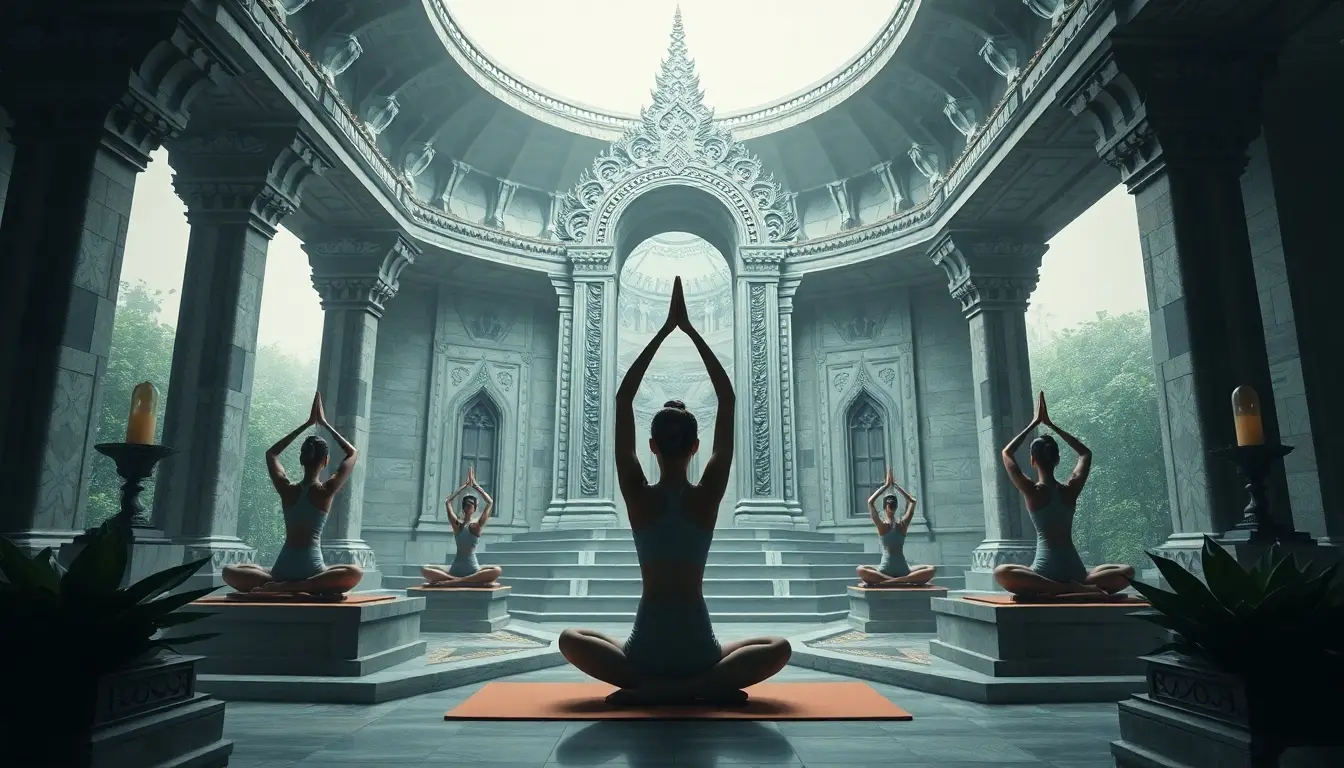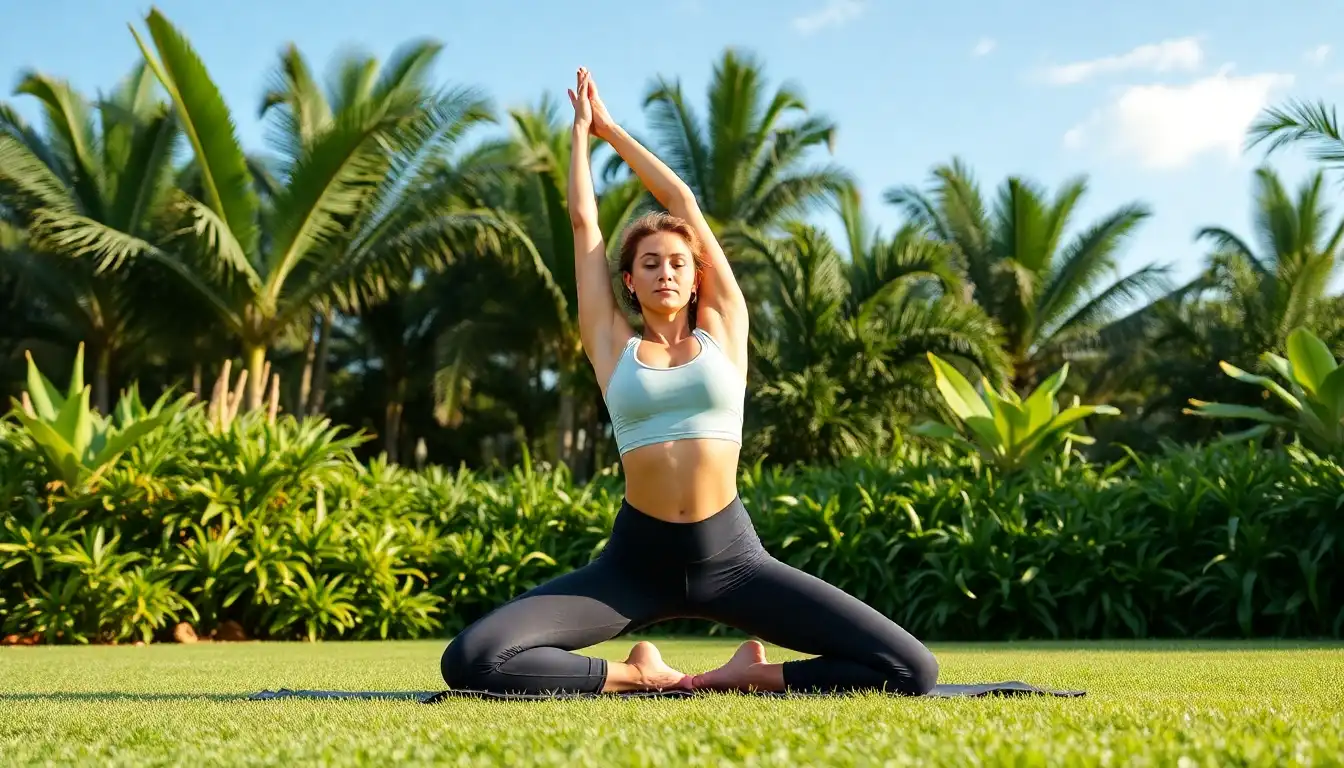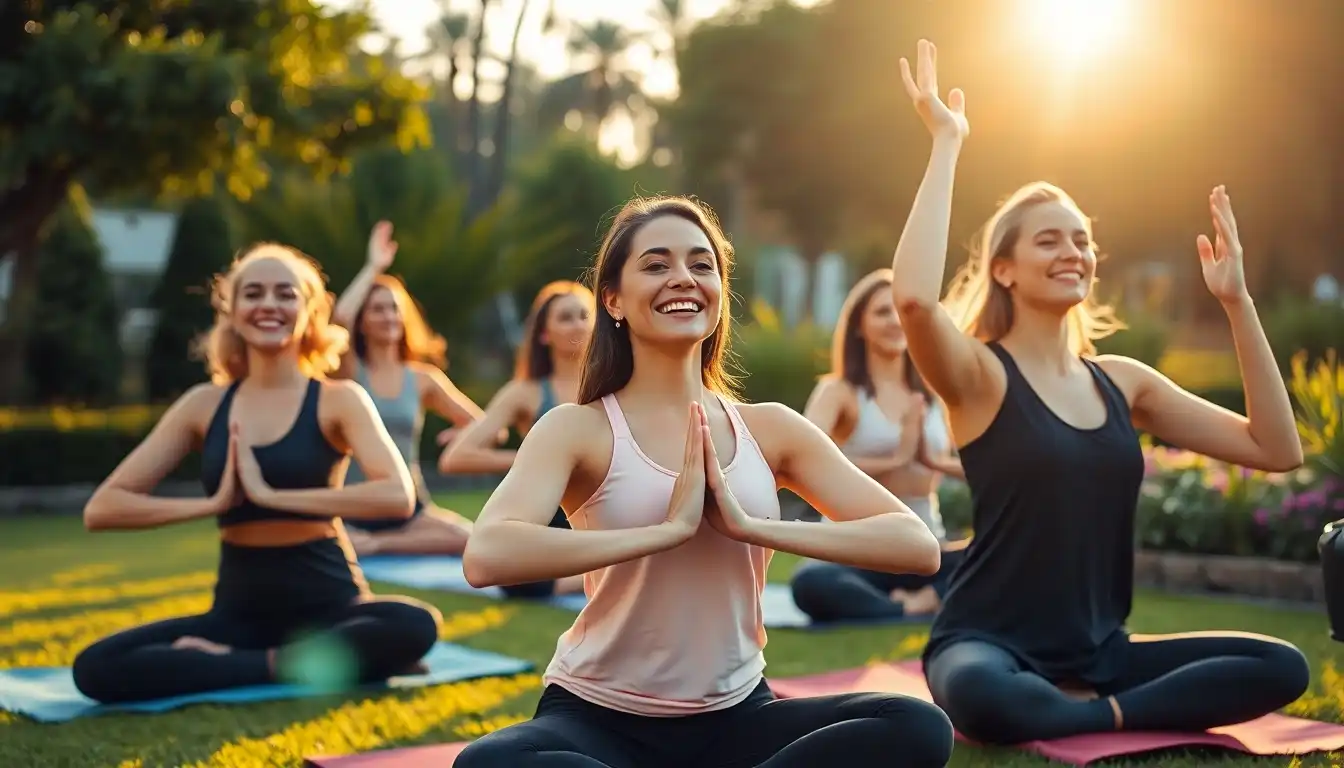Table of Contents
ToggleThe Effect of Yoga on Flexibility is a topic of paramount importance for practitioners and enthusiasts alike. Understanding how yoga impacts flexibility can empower individuals to enhance their practice, leading to greater physical comfort and overall wellness. This comprehensive exploration delves into the nuances of this connection.
Understanding the Relationship: Effect of Yoga on Flexibility
The Effect of Yoga on Flexibility is fundamentally rooted in the physical postures, or asanas, that are integral to yoga practice. These poses work to stretch and lengthen muscles, promoting an increased range of motion and improved overall flexibility. As practitioners regularly engage in yoga, the connective tissues and muscles adapt, leading to enhanced elasticity.
Moreover, yoga encourages mindful breathing and body awareness, which significantly contributes to flexibility. This conscious approach allows individuals to explore their physical limits gently, fostering a sense of comfort and safety during practice. Over time, consistent yoga practice can lead to remarkable advancements in flexibility and mobility.
- Development of muscle control and coordination enhances flexibility.
- Stimulation of the nervous system promotes relaxation in muscles.
- Regular practice leads to improved joint health and performance.
The Science Behind Flexibility in Yoga
The Effect of Yoga on Flexibility involves complex physiological processes that enhance muscle and joint function. Regular yoga practice stimulates the production of synovial fluid, which lubricates joints, improving their movement. This is essential for maintaining flexibility as one ages, making yoga an invaluable practice for all age groups.
In addition, yoga poses often emphasize gradual stretching, which helps to elongate muscle fibers. This gradual process minimizes the risk of injury while promoting sustainable flexibility gains. The combination of static and dynamic stretches found in yoga creates a unique environment conducive to physical adaptability and growth.
The mind-body connection fostered through yoga is equally critical to understanding flexibility improvements. By focusing on intentional movement, practitioners can alleviate tension and stress in tight areas, paving the way for greater flexibility. This mindfulness can transform not only the body but also one’s overall well-being.
Yoga Styles and Their Impact on Flexibility
Different yoga styles significantly influence the Effect of Yoga on Flexibility. For instance, Hatha yoga focuses on slow-paced poses, which promote gentle stretching and help novices build a foundation in flexibility. In contrast, styles such as Vinyasa offer a more dynamic approach that can enhance flexibility through flow and transitions between postures.
Certain styles, like Yin yoga, involve long-held poses that target deep connective tissues and fascia. This can lead to greater flexibility over time, especially in areas like the hips and back. Practitioners can choose styles aligned with their flexibility goals, allowing for personalized and effective practice.
- Hatha yoga introduces fundamental poses for beginners.
- Vinyasa style enhances flexibility through fluid transitions.
- Restorative yoga supports relaxation and reduces tension in muscles.
Common Asanas to Enhance Flexibility
The Effect of Yoga on Flexibility is exemplified in various asanas that target different muscle groups. Poses such as Downward Dog emphasize stretching the back, calves, and hamstrings, offering a dynamic way to foster flexibility. Similarly, Seated Forward Bend encourages elongation of the spine and legs.
Integrating postures like Cat-Cow into practice can enhance flexibility in the spine, creating fluidity in movement. As practitioners transition between these poses, they can cultivate an awareness of their body’s limitations, leading to progressive flexibility improvements.
Engaging in yoga provides valuable insights into one’s body, allowing for the exploration of personal flexibility goals. With consistent practice, practitioners can witness firsthand the transformative effect of yoga, making it an essential tool for enhancing their overall physical capabilities.

The Role of Breath in Enhancing Flexibility
The Effect of Yoga on Flexibility is also greatly influenced by the practice of pranayama, or breath control. Breath acts as a bridge between the mind and body, allowing practitioners to synchronize their movements with their breathing patterns. This alignment enhances focus and can deepen the experience of stretching.
Through breathing techniques, practitioners can facilitate muscle relaxation and reduce tension in tight areas, thus enhancing flexibility. For instance, extending the exhale during challenging poses can encourage a release of resistance, contributing to deeper stretches and improved postural alignment.
- Deep breathing calms the nervous system, aiding muscle relaxation.
- Mindful breathing increases body awareness during yoga practice.
- Breath synchronization enhances the quality of movements, leading to better flexibility.
Mindfulness and Its Connection to Flexibility in Yoga
The interplay between mindfulness and the Effect of Yoga on Flexibility is significant. A mindful approach to yoga encourages practitioners to pay attention to bodily sensations and adapt their practice based on feedback from their bodies. This awareness can foster a more profound understanding of one’s flexibility limits and goals.
Practitioners are encouraged to listen to their bodies during yoga sessions, adjusting poses as needed to avoid pushing too far. This focus on self-awareness cultivates a positive relationship with one’s body and promotes gradual progress in flexibility without the risk of injury.
By creating a non-judgmental space for self-exploration, mindfulness practices integrated into yoga can renew one’s commitment to flexibility. This holistic approach nurtures not only physical capacity but also emotional resilience, leading to a well-rounded experience of yoga.

Exploring the positive impact of yoga on flexibility and overall wellness.
Effect of Yoga on Flexibility
The effect of yoga on flexibility is profound and transformative. Engaging in regular yoga practice promotes enhanced range of motion across various muscle groups and joints. As flexibility improves, it fosters a deeper connection between body and mind, creating a holistic sense of well-being.
Increased flexibility obtained through yoga can significantly reduce muscle tension and stress, allowing practitioners to move through daily activities with more ease. This transition often leads to an uplifted mood and enhanced overall health. Furthermore, flexibility plays a crucial role in injury prevention, making yoga an ideal choice for all ages.
- Improves strength and balance
- Enhances posture
- Reduces the risk of injury
Promoting Muscle Recovery
Yoga’s incorporation of stretching and deep breathing facilitates muscle recovery. The gentle yet effective poses encourage blood flow, which aids in the repair of muscle fibers. This recovery process is vital after exercise, especially for those leading active lifestyles.
Practitioners often find that improved flexibility leads to less soreness post-workout. By incorporating various yoga asanas, individuals can effectively alleviate tightness in both muscles and connective tissues, creating a more resilient body. Therefore, an adaptable body can enhance performance in other physical activities.
Moreover, yoga not only benefits the musculoskeletal system but also supports emotional healing, contributing to a more balanced energy flow throughout the body. This holistic enhancement is essential in promoting overall wellness.

Boosting Body Awareness
The effect of yoga on flexibility extends beyond physical benefits. Increased flexibility promotes greater body awareness, allowing each practitioner to discover their unique physical capabilities. This awareness sets the stage for personal growth in both body and mind.
As individuals become more familiar with their body movements through yoga, they learn to listen to their physical needs. This attentiveness leads to more informed decisions regarding posture and muscle engagement, whether in daily tasks or during sports. Consequently, improved awareness contributes to better overall function and health.
- Enhances mind-body connection
- Encourages mindfulness in movements
- Facilitates self-reflection and growth
Enhancing Athletic Performance
For athletes, the effect of yoga on flexibility can be a game-changer. Enhanced flexibility allows for more efficient movement patterns, improving overall athletic performance. As a result, athletes experience improved endurance, agility, and strength.
Incorporating yoga into training regimens helps athletes maintain optimal physical condition. Regular practice aids in elongating muscles, reducing the likelihood of strains or other injuries. Moreover, this enhanced flexibility allows athletes to execute their skills with greater precision and control.
As many athletes have noted, incorporating yoga into their routines can enhance both their physical and mental resilience. This newfound strength contributes to sustained focus and greater success in competition.
Facilitating Everyday Movement
The effect of yoga on flexibility significantly influences daily movements and activities. Improved flexibility translates to a more fluid motion, which is vital not only for fitness enthusiasts but also for individuals navigating the routine aspects of life.
Everyday tasks can become easier and less taxing on the body with increased flexibility. Individuals often experience an enhanced ability to bend, twist, lift, and reach comfortably. This ease of movement fosters a sense of confidence in participating in various activities, from household chores to recreational sports.
- Encourages smooth and effective movement
- Provides relief from common aches and pains
- Enhances overall quality of life
Supporting Mental Clarity
The benefits of yoga extend to mental clarity alongside physical flexibility. Improved flexibility can lead to enhanced breathing techniques, promoting relaxation and mental focus. As stress levels decrease, practitioners often find themselves more present and engaged with their surroundings.
Mindfulness cultivated through yoga can foster better decision-making and an enhanced sense of well-being. Those who practice regularly report feeling more balanced and capable of handling life’s challenges. Reducing mental clutter often paves the way for innovative thinking and enhanced creativity.
Additionally, as individuals experience mental clarity alongside physical improvements, the motivation to maintain an active lifestyle rises. This synergy of body and mind can lead to lasting changes and a more fulfilling life.
For more information about yoga and its benefits, feel free to visit Relhum. Explore our insightful resources and enriching products at our shop. If you’re searching for engaging content, check our blog, or reach out through our contact page.

Caption: Exploring the effect of yoga on flexibility.
Understanding the Effect of Yoga on Flexibility
The effect of yoga on flexibility is profound and multifaceted. As practitioners engage in various poses and stretches, they experience increased range of motion in their joints and muscles. Over time, these practices cultivate lasting flexibility that extends beyond the yoga mat.
This transformation occurs not just physically but holistically. Regular yoga practice encourages a deeper awareness of one’s body, leading to improved alignment and posture, which are crucial for maintaining lasting flexibility. The connection between body and mind is strengthened through mindful breathing practices, enhancing the overall experience.
Flexibility cultivated through yoga creates opportunities for improved performance in various physical activities outside of yoga. Furthermore, it can aid in injury prevention and recovery, empowering practitioners to engage more fully in their daily lives.
Five Tips to Enhance the Effect of Yoga on Flexibility
To effectively enhance the effect of yoga on flexibility, consider incorporating the following strategies into your routine. By focusing on these aspects, you can maximize the benefits of your practice and progressively improve your flexibility.
- Practice consistency: Engage in regular yoga sessions to nurture ongoing flexibility development.
- Warm-up properly: Start with gentle stretches to prepare your body before diving into deeper poses.
- Utilize props: Enhance your practice with items like blocks and straps to support your movements.
- Focus on breath: Breathing deeply and consciously helps release tension in your muscles, allowing for smoother stretches.
- Explore various styles: Different styles of yoga emphasize unique postures and approaches, providing a well-rounded flexibility experience.

Transformation comes steadily with practice; as you explore the effect of yoga on flexibility, your body will learn to adjust and yield to deeper stretches. Embracing this journey, it is crucial to remember the importance of patience and self-compassion, recognizing that every individual’s growth will vary.
Practicing Mindfulness to Enhance Flexibility
The effect of yoga on flexibility is significantly amplified when practitioners engage in mindfulness. Mindfulness during yoga involves focusing fully on the breath and the experience of each pose. This critical practice fosters a deeper awareness of bodily sensations and promotes relaxation, creating a conducive environment for stretching.
By bringing mindful awareness to your yoga practice, you highlight the nuances of each position, allowing yourself to ease into deeper stretches. This conscious engagement helps your muscles relax rather than tense, resulting in improved flexibility over time. The cultivation of this awareness can transform your entire experience on the mat.
Being mindful also encourages an open mind towards self-improvement. Each session can become a stepping stone in enhancing your flexibility and overall wellbeing. Embrace the practice with curiosity and patience for a richer outcome.
Integrating Different Yoga Styles for Maximum Flexibility
The effect of yoga on flexibility can be amplified by integrating various yoga styles into your practice. Different styles offer unique benefits and challenges, allowing you to target specific areas for improvement more effectively.
For instance, styles such as Hatha and Yin yoga focus on gentle stretching and holding poses for extended periods, which is ideal for increasing flexibility. Vinyasa and Ashtanga provide a dynamic flow that not only works on flexibility but also enhances strength and endurance, creating a balanced approach to overall fitness.
By alternating between these styles, you foster a more comprehensive practice that can help you achieve greater flexibility as well as overall physical wellness. Experiment with different classes and teachers to find what best connects with your body and mind.
Conclusion: Embrace Your Journey Towards Flexibility
Understanding the effect of yoga on flexibility requires dedication, mindfulness, and a willingness to evolve. By adopting practical strategies, exploring diverse styles, and cultivating mindfulness, you can significantly enhance your flexibility practice.
As you embark on this journey, remember that every small step counts. Find your unique rhythm and enjoy the process of growth. If you’re looking for more resources and products to support your yoga journey, feel free to explore our offerings at Relhum. Together, let’s cultivate a fulfilling yoga experience!
For additional insights and guidance, visit our blog at Relhum Blog or reach out through our contact page. Your path to greater flexibility awaits!

Effect of Yoga on Flexibility: Discover how yoga enhances flexibility and overall well-being.
Questions About Effect of Yoga on Flexibility
1. How does yoga influence flexibility in the body?
Yoga promotes flexibility by gradually stretching and lengthening the muscles, improving the range of motion in the joints. Regular practice helps to release tension in the muscles and enhance overall mobility.
2. What specific yoga poses are best for increasing flexibility?
Poses such as Downward-Facing Dog, Forward Fold, Pigeon Pose, and Butterfly Pose are particularly effective for enhancing flexibility. These asanas target different muscle groups and help to stretch various parts of the body.
3. Can beginners achieve significant improvements in flexibility through yoga?
Yes, beginners can see substantial improvements in flexibility through consistent yoga practice. Starting with modified poses and gradually advancing to more challenging stretches can lead to noticeable results over time.
4. How often should one practice yoga to improve flexibility?
Practicing yoga 3 to 5 times a week can significantly boost flexibility. Consistency is key, as regular stretching and strengthening can yield better progress than infrequent sessions.
5. Does meditation play a role in improving flexibility?
While meditation itself does not directly improve flexibility, it enhances the mind-body connection, promoting relaxation and reducing tension. This can create a more open mindset for practicing yoga and increasing flexibility.
6. How does breath control (pranayama) help with flexibility in yoga?
Pranayama techniques help to regulate breath, which calms the mind and body. This relaxation allows for deeper stretches and increased flexibility, as it reduces resistance in the muscles while practicing asanas.
7. Can aromatherapy enhance the flexibility benefits of yoga?
Aromatherapy can complement yoga practice by creating a calming environment. Essential oils, such as lavender or eucalyptus, can promote relaxation and reduce muscle tension, aiding in deeper stretches and improving flexibility.
8. Is there a connection between flexibility and women’s health in yoga?
Yes, improving flexibility through yoga can benefit women’s health by alleviating menstrual discomfort, enhancing pelvic floor strength, and reducing tension in the body—contributing to overall wellness.
9. How can mudras assist in increasing flexibility during yoga practice?
Mudras, or hand gestures, can enhance focus and energy flow in the body during yoga. By incorporating mudras into your practice, you may increase mindfulness and receptivity to flexibility gains in your physical body.
10. What should I do if I experience pain while trying to increase flexibility in yoga?
If you experience pain while practicing yoga, it’s essential to stop the activity and assess your technique. Consult with a certified instructor to ensure proper alignment and modifications, and listen to your body to avoid injury.


